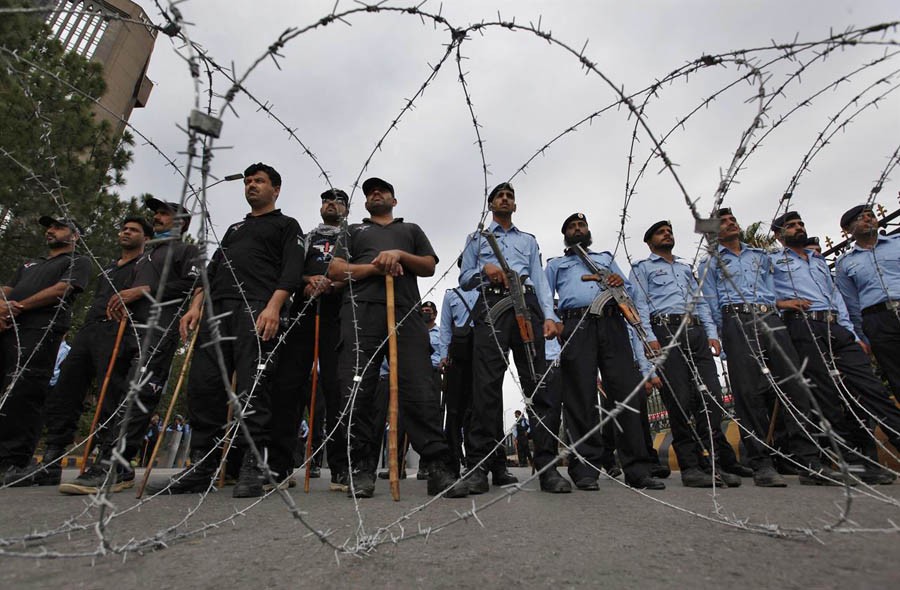
The simulacrum has become the truth; the world is now a battleground of images. Pakistan has to think of its image in this world

The discussion about the nature of an image has been going on for more than two thousand years. In Book X of The Republic by Plato, Socrates discusses with Glaucon, the elder brother of Plato, the ideal, the artefact, and the image: "Beds, then, are of three kinds, and there are three artists who superintend them: God, the maker of the bed, and the painter."
The ideal is in God’s mind, the manufacturer of the physical objects tries to imitate the ideal in God’s mind, the painter imitates the maker of objects. In The Republic, both the painter and the poet are at the same level. The imitators (the painter and the poet) are "thrice removed" from the truth: "the imitator…is a long way off the truth, and can do all things because he lightly touches on a small part of them, and that part [is] an image." Herein lies the essence of Platonic idealism: the ideal is real and the physical object is an imitation and the image is an imitation of an imitation.
The history of the world of ideas is divided between the idealists and the materialists since then. Hegel believed the history of the world was a journey of humankind towards the ideal state. Marx believed that the history of the world was the history of material relations and, therefore, only a classless society would end the class divisions and that would be the end of history.
For the idealists, the metaphysical ideas govern the world and, for the materialists, matter (property, goods, tangible value) governs the world. This is the nature of the debate until the image -- neither the idea nor the physical object -- becomes primary in world history.
This has been identified as the postmodern stage of world history by Jean Baudrillard in his book, Simulations and Simulacra, where he declares that the image has become more important than the idea or the physical object: "the simulacrum is the truth."
For Baudrillard, as soon as colours became independent of nature (plastic objects which can look and feel like wooden objects), human societies entered a new phase of history where only the image mattered. He went on to declare that images had become more powerful than nation-states and societies. His book, The Gulf War did not Take Place argued that, for a great number of people, the war for the liberation of Kuwait did not take place in real because it was a televised war: "No images of the field of battle, but images of masks, of blind or defeated faces, images of falsification. It is not war taking place over there but the disfiguration of the world."
Read also: Oversimplification of nuance
Many historians had already tried to deal with the emergence of the image as an arbiter of reality before Baudrillard as well. For example, Benedict Anderson, in his book, Imagined Communities, had attributed the birth of the nation-state to the invention of the printing press.
For Anderson, modern nationalism was print nationalism. A nation was a group of people reading the same newspapers. The printing press enabled human beings to unite beyond the boundaries of villages, tribes, and towns, and created imagined nations. The image of the nation had to permeate through the limits of the tribe and the village. The nation, thus, is an image created and sustained by modern technology. Premodern human collectives were limited because their images could not be circulated beyond certain geographical limits.
When the printing press was surpassed by the television, it still remained a largely national phenomenon. Many readers can still remember the era of Pakistan Television being the only channel. That was the era before globalisation and postmodernity had arrived in Pakistan. The main theorist of this postmodern condition, Jean-François Lyotard, has theorised the postmodern era as an era where national narratives and images (maintained by the national media) are no longer the only grand narratives.
For Lyotard, the postmodern era is defined by the arrival of multinational corporations that challenge the images and stories of the nation. CNN, MTV, BBC, and Deutsche Welle are everywhere now. The nation has lost the monopoly over the image and the national narrative is in disarray since then.
The world economy, in its present configuration, is not run by the circulation of ideas or of material goods but by circulation of images. One example can illustrate this point properly. Before the 2003 invasion of Iraq (after the Gulf War and the attack on the World Trade Centre), the world powers had to justify invading a country that had nothing to do with 9/11. They created an image with a feverish pitch: Iraq had Weapons of Mass Destruction. The New York Times wrote a number of articles that created this image of Iraq as possessing WMDs.
Judith Miller and Michael R. Gordon were two journalists who paved the way for the American government by writing stories of Saddam’s attempts to develop weapons of mass destruction. In 2005, The New York Times admitted that these stories were false, "Ms. Miller may still be best known for her role in a series of Times articles in 2002 and 2003 that strongly suggested Saddam Hussein already had or was acquiring an arsenal of weapons of mass destruction… Many of those articles turned out to be inaccurate."
These inaccurate representations of a nation have led to the death of thousands of human beings. The image led to the death of the image-maker. The simulacrum has become the truth. The world is now a battleground of images. Pakistan has to think of its image in the world and attempt to regain control of its representations in the world if it seeks to secure any dignity for its people.